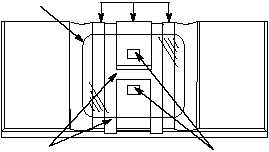tissue. When the oil-immersion lens is not being used,
remove the oil with lens tissue. Use oil solvents (such
as xylene) on lenses only when required to remove
dried oil and only in the minimal amount necessary.
Never use alcohol or similar solvents to clean lenses.
COMPLETE BLOOD COUNT
LEARNING OBJECTIVE:
Identify the
five parts of a complete blood count, and
recognize the testing procedures for the
following:
Unopette® Red Blood Cell
Count, Microhematocrit, Unopette White
Blood Cell Count, and Differential White
Blood Cell Count.
A complete blood count consists of the following
five tests:
Total red blood cell (RBC) count
Hemoglobin determination
Hematocrit reading
Total white blood cell (WBC) count
Differential white blood cell count
The complete blood count, commonly referred to
as a CBC, is used in the diagnosis of many diseases.
Blood collected for these tests are capillary or
peripheral blood and venous blood. CBCs may be
performed either manually or by using automated
hematology analyzers. The manual method is used in
isolated locations and on board some naval vessels
where a hematology analyzer installation is not
practical. For this reason, and because machines break
down on occasion, the manual method will be covered
in the following sections.
COUNTING BLOOD CELLS
To manually count red blood cells (erythrocytes)
and white blood cells (leukocytes), you will need a
m i c r o s c o p e a n d a n i n s t r u m e n t c a l l e d a
hemacytometer. See figure 7-6. The hemacytometer
is a thick glass slide with three raised parallel platforms
on the middle third of the device. The central platform
is subdivided by a transverse groove to form two
halves, each wider than the two lateral platforms and
separated from them and from each other by moats.
The central platforms each contain a counting chamber
and are exactly 0.1 mm lower than the lateral
platforms.
Each counting chamber has precisely ruled lines
etched into the glass, forming a grid. This grid or
ruled area is so small that it can only be seen with the
aid of a microscope. The grid used by most
laboratories is the Improved Neubauer Ruling. See
figure 7-7 for an example of the Improved Neubauer
Ruling. The Improved Neubauer Ruling is 3 by 3 mm
(9 mm2) and subdivided into nine secondary squares,
each 1 by 1 mm (1 mm2).
A thick cover glass, ground to a perfect plane,
accompanies the counting chamber (fig. 7-6).
Ordinary cover glasses have uneven surfaces and
should not be used. When the cover glass is in place on
the platform of the counting chamber, there is a space
exactly 0.1 mm thick between it and the ruled platform.
Counts of red blood cells and white blood cells are
each expressed as concentration: cells per unit volume
of blood.
The unit of volume for cell counts is
expressed as cubic millimeters (mm3) because of the
linear dimensions of the hemacytometer chamber.
TOTAL RED BLOOD CELL COUNT
The total red blood cell (erythrocyte) count is the
number of red cells in one cubic millimeter of blood.
The normal red blood cell count is as follows:
Adult male. . . . . . . . . . . . . . .4.2 to 6.0 million per mm3
Adult female . . . . . . . . . . . . .3.6 to 5.6 million per mm3
Newborn. . . . . . . . . . . . . . . . .5.0 to 6.5 million per mm3
7-10
COVER
GLASS
RAISED
PLATFORMS
COUNTING
CHAMBERS
MOATS
TOP VIEW
COVER GLASS
DEPTH OF CHAMBER = 0.1MM
RAISED PLATFORM
RAISED PLATFORM
RULED
PLATFORM
SIDE VIEW
HM3f0706
Figure 7-6.—Top and side views of a hemacytometer.



